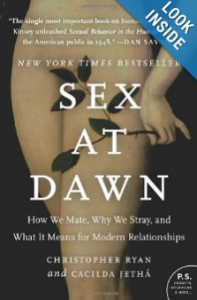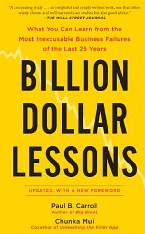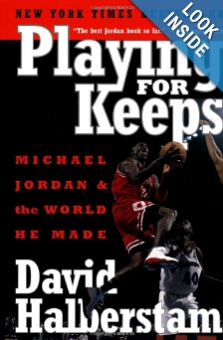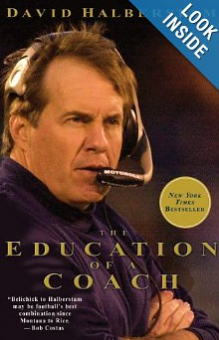 I recently read “Sex At Dawn: How We Mate, Why We Stray, and What It Means for Modern Relationships” by Christopher Ryan and Cacilda Jetha. This is one of the most thought provoking books I read in a while. Below are the quotes that I found most interesting. As always, if you like the quotes, please buy the book here.
I recently read “Sex At Dawn: How We Mate, Why We Stray, and What It Means for Modern Relationships” by Christopher Ryan and Cacilda Jetha. This is one of the most thought provoking books I read in a while. Below are the quotes that I found most interesting. As always, if you like the quotes, please buy the book here.
“Where paternity is unimportant, men tend to be relatively unconcerned about women’s sexual fidelity.” (15)
“Agriculture, one might say, has involved the domestication of the human being as much as of any plant or other animal.” (83)
“Something may benefit a culture overall, while being disastrous to the majority of the individual members of that society. Individuals suffer and die in wars from which a society may benefit greatly.” (83)
“This disconnect between individual and group interests helps explain why the shift to agriculture is normally spun as a great leap forward, despite the fact that it was actually a disaster for most of the individuals who endured it. Skeletal remains taken from various regions of the world dating to the transition from foraging to farming all tell the same story: increased famine, vitamin deficiency, stunted growth, radical reduction in life span, increased violence… little cause for celebration. For most people, we’ll see that the shift from foraging to farming was less a giant leap forward than a dizzying fall from grace.” (83)
“The sense of being alone – even in a crowded city – is an oddity in human life, included, like so much else, in the agricultural package.” (87)
“Anthropologists Stephen Beckerman and Paul Valentine explain, “Pregnancy is viewed as a matter of degree, not clearly distinguished from gestation… all sexually active women are a little pregnant. Over time… semen accumulates in the womb, a fetus is formed, further acts of intercourse follow, and additional semen causes the fetus to grow more.” Were a woman to stop having sex when her periods stopped, people in these cultures believe the fetus would stop developing.
This understanding of how semen forms a child leads to some mighty interesting conclusions regarding “responsible” sexual behavior. Like mothers everywhere, a woman from these societies is eager to give her child every possible advantage in life. To this end, she’ll typically seek out sex with an assortment of men. She’ll solicit “contributions” from the best hunters, the best storytellers, the funniest, the kindest, the best-looking, the strongest, and so on – in the hopes her child will literally absorb the essence of each.” (91)
“It turns out the Ache distinguish four different kinds of fathers. According to the anthropologist Kim Hill, the four types of fathers are:
Miare: the father who put it in;
Peroare: the fathers who mixed it;
Momboare: those who spilled it out; and
Bykuare: the fathers who provided the child’s essence.” (92)
“Far from being enraged at having his genetic legacy called into question, a man in these societies is likely to feel gratitude to other men for pitching in to help create and then care for a stronger baby. Far from being blinded by jealousy as the standard narrative predicts, men in these societies find themselves bound to one another by shared paternity for the children they’ve fathered together.” (92)
“It has long been clear that the sources of female sexual reticence are more cultural than biological.” (96)
“Primates aside, only 3 percent of mammals and one in ten thousand invertebrate species can be considered sexually monogamous. Adultery has been documented in every ostensibly monogamous human society ever studied, and is a leading cause of divorce all over the world today.” (97)
“No group-living nonhuman primate is monogamous, and adultery has been document in every human culture studied – including those in which fornicators are routinely stoned to death. In light of all this bloody retribution, it’s hard to see how monogamy comes “naturally” to our species.” (98)
“They’ve followed an egalitarian path not because they are particularly noble, but because it offers them the best chance of survival.” (100)
“De Waal’s research has demonstrated that the increased sexual receptivity of the female bonobo dramatically reduces male conflict, when compared with other primates whose females are significantly less sexually available. The abundance of sexual opportunity makes it less worthwhile for males to risk injury by fighting over any particular sexual opportunity.” (101)
“Unconstrained by cultured restrictions, the so-called continual responsiveness of the human female would fulfill the same function: provide plentiful sexual opportunity for males, thereby reducing conflict and allowing larger group sizes, more extensive cooperation, and greater security for all.” (101)
“Paternity certainty, far from being the universal and overriding obsession of all men everywhere and always, as the standard narrative insists, was likely a nonissue to men who lived before agriculture and resulting concerns with passing property through lines of paternal descent.” (104)
“Hobbes took the madness of his age, considered it “normal,” and projected it back into prehistoric epochs of which he knew next to nothing.” (157)
“Basic human reproductive biology in a foraging context made rapid population growth unlikely, if not impossible. Women rarely conceive while breastfeeding, and without milk from domesticated animals, hunter-gatherer women typically breastfeed each child for five or six years.” (159)
“Individuals in species spreading into rich new ecosystems aren’t locked in a struggle to the death against one another. Until the niche is saturated, such intraspecies conflict over food is counterproductive and needless.” (160)
“Most of our ancestors lived in a largely unpopulated world, chockfull of food.” (160)
“The bigger the society is, the less functional shame becomes.” (172)
“Marx’s fatal error was his failure to appreciate the importance of context. Human nature functions one way in the context of intimate, interdependent societies, but set loose in anonymity, we become a different creature. Neither beast is more nor less human.” (172)
“It is a common mistake to assume that evolution is a process of improvement, that evolving organisms are progressing toward some final, perfected state. But they, and we, are not. An evolving society or organism simply adapts over the generations to changing conditions. While these modifications may be immediately beneficial, they are not really improvements because external conditions never stop shifting.” (172)
“Israeli anthropologist Nutrit Bird-David explains, “just as Westerners’ behaviour is understandable in relation to their assumption of shortage, so hunter-gatherers’ behavior is understandable in relation to their assumption of affluence.” (174)
“Throughout the world, the shift to agriculture accompanied a dramatic drop in the quality of most people’s diets and overall health.” (175)
“Difficult as it may be for some to accept, skeletal evidence clearly shows that our ancestors didn’t experience widespread, chronic scarcity until the advent of agriculture.” (180)
“But Goodall’s impression of relative harmony was to change – not coincidentally, argues Power – precisely when she and her students began giving the chimps hundreds of bananas every day, to entice them to hang around the camp so they could be observed more easily.
In the wild, chimps spread out to search for food individually or in small groups. Because the food is scattered throughout the jungle, competition is unusual. But, as Frans de Waal explains, “as soon as humans start providing food, even in the jungle, the peace is quickly disturbed.”” (188)
“Nolan found that above-average population density was the best predictor of war. This finding is problematic for the argument that human war is a “5-million-year habit,” given our ancestors’ low population densities until the post-agricultural population explosion began just a few thousand years ago.” (191)
“Asking whether our species is naturally peaceful or warlike, generous or possessive, free-loving or jealous, is like asking whether H2O is naturally a solid, liquid, or gas. The only meaningful answer to such a question is: It depends. On a nearly empty planet, with food and shelter distributed widely, avoiding conflict would have been an easy, attractive option.” (199)
“Life expectancy at birth, which is the measure generally cited, is far from an accurate measure of the typical life span.” (202)
“The shift to agriculture was accelerated by the seemingly irrefutable belief that it’s better to take strangers’ land (killing them if necessary) than to allow one’s own children to die of starvation.” (204)
“The less an individual slept, the more likely he or she was to come down with a cold. Those who slept less than seven hours per night were three times as likely to get sick.” (208)
“If you hunt or gather just enough low-fat food to forestall serious hunger pangs, and spend the rest of your time in low-stress activities such as telling stories by the fire, taking extended hammock-embraced naps, and playing with children, you’d be engaged in the optimal lifestyle for human longevity.” (209)
“If we really did evolve in a Hobbesian ordeal of constant terror and anxiety, if our ancestors’ lives truly were solitary, poor, nasty, brutish, and short, why, then, are we still so vulnerable to stress?” (210)
“If you think about it, the neo-Hobbesian vision is far sunnier than ours. To have concluded, as we have, that our species has an innate capacity for love and generosity at least equal to our taste for destruction, for peaceful cooperation as much as coordinated attack, for an open, relaxed sexuality as much as for jealous, passion-smothering possessiveness… to see that both these worlds were open to us, but that around ten thousand years ago a few of our ancestors wandered off the path they’d been on forever into a garden of toil, disease, and conflict where our species has been trapped ever since… well, this is not exactly a rose-colored view of the overall trajectory of humankind. Who are the naive romantics here, anyway?” (212)
“Their analysis ignores the fact that the cultural conditions necessary for some males to accumulate sufficient political power and wealth to support multiple wives and their children simply did not exist before agriculture.” (217)
“The assertion that the same physical evidence correlates to promiscuity in chimps and bonobos but indicates mild polygyny or monogamy in humans shows just how shaky the standard model really is.” (218)
“In bonobos, since everybody gets some sugar, the competition takes place on the level of the sperm cell, not at the level of the individual male… So the game’s still the same – getting one’s genes into the future – but the field of play is different. With harem-based polygynous systems like the gorilla’s, individual males fight it out before any sex takes place. In sperm competition, the cells fight in there so males don’t have to fight out here. Instead, males can relax around one another, allowing larger group sizes, enhancing cooperation, and avoiding disruption to the social dynamic. This helps explain why no primate living in multimale social groups is monogamous. It just wouldn’t work.” (223)
“Competing sperm from other men seems to be anticipated in the chemistry of men’s semen, both in the early spurts (protective) and in the later spurts (attacking).” (228)
“A team of Australian researchers found that men who had ejaculated more than five times per week between the ages of twenty and fifty were one-third less likely to develop prostate cancer later in life.” (238)
“A different team from Sydney University reported in late 2007 that daily ejaculation dramatically reduced DNA damage to men’s sperm cells, thereby increasing male fertility – quite the opposite of the conventional wisdom. After forty-two men with damaged sperm were instructed to ejaculate daily for a week, almost all showed less chromosomal damage than a control group who had abstained for three days.” (238)
“By 1917, there were more vibrators than toasters in American homes.” (248)
“We aren’t designed to make each other miserable. This view holds evolution responsible for the mismatch between our evolved predispositions and the post-agricultural socioeconomic world we find ourselves in. The assertion that human beings are naturally monogamous is not just a lie; it’s a lie most Western societies insist we keep telling each other.” (270)
“Greater erotic plasticity leads most women to experience more variation in their sexuality than men typically do, and women’s sexual behavior is far more responsive to social pressure.” (272)
“Subsequent research has confirmed, that most of the women were attracted to the scent of men whose major histocompatibility complex (MHC) differed from her own. This preference makes genetic sense in that the MHC indicates the range of immunity to various pathogens. Children born of parents with different immunities are likely to benefit from a broader, more robust immune response themselves.
The problem is that women taking birth control pills don’t seem to show the same responsiveness to these male scent cues. Women who were using birth control pills chose men’s T-shirts randomly or, even worse, showed a preference for men with similar immunity to their own.
Consider the implications. Many couples meet when the woman is on the pill. They go out for a while, like each other a lot, and then decide to get together and have a family. She goes off the pill, gets pregnant, and has a baby. But her response to him changes. There’s something about him she finds irritating – something she hadn’t noticed before. maybe she finds him sexually unattractive, and the distance between them grows. But her libido is fine. She gets flushed every time she gets close enough to smell her tennis coach. Her body, no longer silenced by the effects of the pill, may now be telling her that her husband (still the great guy she married) isn’t a good genetic match for her. But it’s too late. They blame it on the work pressure, the stress of parenthood, each other…
Because this couple inadvertently short-circuited an important test of biological compatibility, their children may face significant health risks ranging from reduced birth weight to impaired immune function. How many couples in this situation blame themselves for having “failed” somehow? How many families are fractured by this common, tragic, undetected sequence of events?” (275-276)
“Cultures that don’t interfere in the physical bonding between mother and child or prohibit the expression of adolescent sexuality show far lower levels of violence – both between individuals and between societies.” (284)
“Monogamy itself seems to drain away a man’s testosterone.” (293)
“Researcher James Roney and his colleagues found that even a brief chat with an attractive woman raised men’s testosterone levels by an average of 14 percent.” (294)
If you liked the quotes, please buy the book here.





